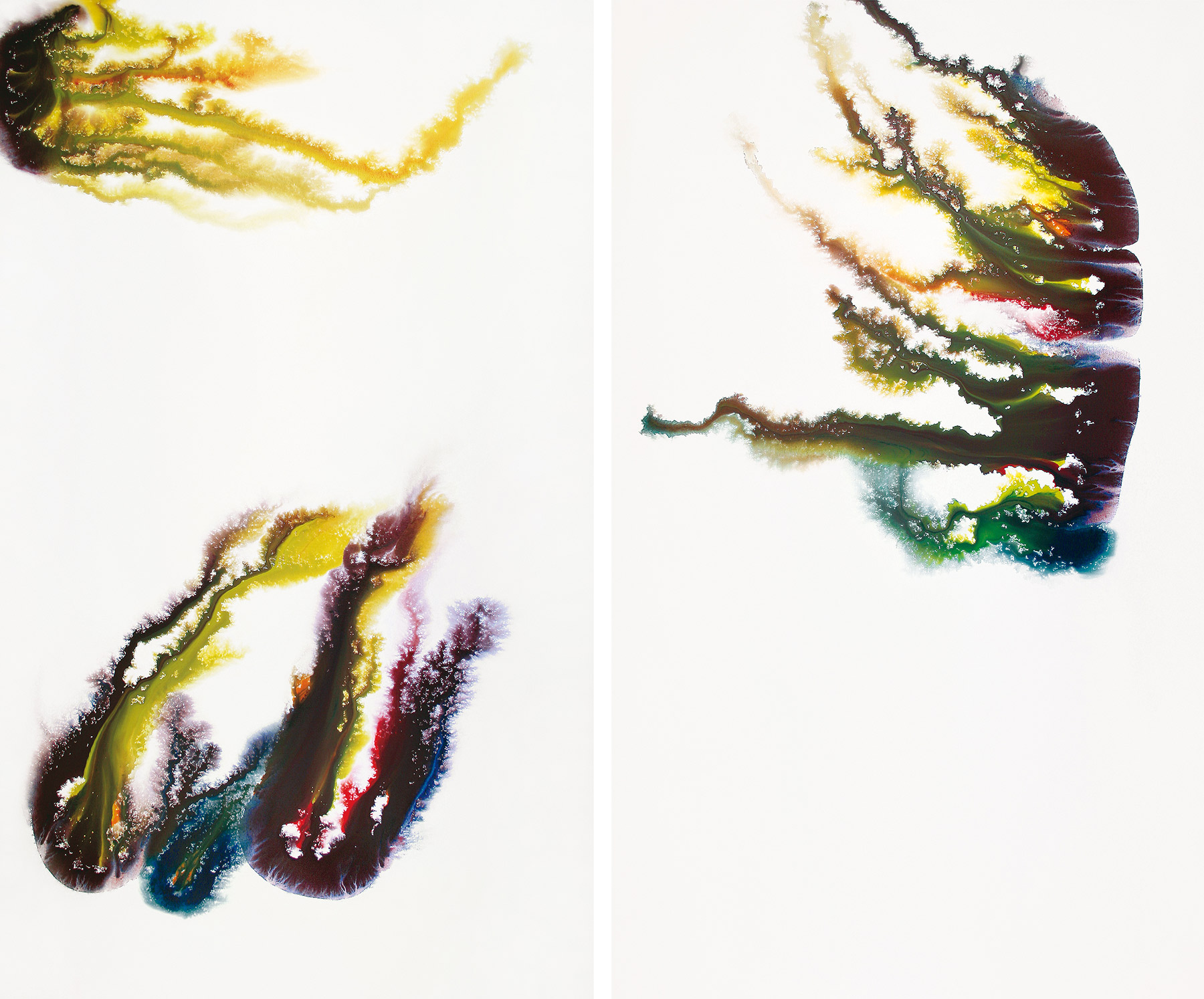Randomness and rigor
(or the pictorial alchemy of Manoel Veiga)
(or the pictorial alchemy of Manoel Veiga)
by Adolfo Montejo Navas
(translated from Portuguese by Thomas Nerney)
Published in the catalogue of the solo exhibition at the Murillo La Greca Museum, Recife PE, 2007.
Manoel Veiga's poetics belongs to the extreme of painting being reinvented in contemporaneity. Like every visual artist inscribing on support with such a long history, strategies for conceptualizing and performing say almost everything and are executed on the boundaries of the genre. Particularly when —in the same way as some painting migrated to a different register, in disguise or otherwise— there is also art that recalls/reads mimeses and representational codes from painting, and both paths bear close similarities. But this is not the case here. Veiga turns to the atavistic support of canvas to use procedures that are also formulations of a physics-chemistry aesthetic, or rather a pictorial alchemy that relates randomness to rigor. He seems to work from Malevich’s leitmotiv of new color relations having to be created on the basis of the demands of color itself, and color too having to move on from pictorial mixture to independent unit, as structure in which it is at the same time individual in a collective context and independent individually. Involved in this point of departure, or quest, is a new way of reviving the field of abstraction in painting, which now has its cultural memory established, but not concluded. This now means showing the process and means of conveying pictorial experience, reflecting on the nature of painting itself. There is something metalinguistic here, inevitably, developing in the same microcosmos as color, through artistic inquiry in which gesture (with counterpoised oriental and Pollock-like echoes) has transcendence derived from energetic motion and dynamics as part of this painting. Its entropy goes to the extent of altering and disrupting the normal color system, but also informative uncertainty (ambiguity) translates in its drift. This means subsuming a substantial degree of uncertainty in the result, but this is never seen as error.
Despite Veiga's illuminating explanation of his procedure in his notes ("varying entropy is a way of measuring", "entropy is no measure of chaos", "diffusion of energy is the power of action in chemistry"), the keystone for all this artistic formulation is the study of behavior of paint, pigments, liquids, emulsion, diffusion, dispersion, etc., favoring differing dynamics in action (presence of water echoing watercolor subtleties, differing nuances and registrations). So all these operations hint that this poetics has a law of gravity that is more gravitational and belongs to a different level of aesthetic work. In fact, in these acrylic paints on canvas or paper, pictorial space never ceases to be mind space too, in which blank void speaks volumes. As Zhang Shi said, void is not ‘nothingness’, void is the painting.
On our approach, the images obtained by the artist reflect an unstable regime of harmony, a random visual repertoire beyond the reach of reductionism or directed interpretations: authorship itself is immersed in language – a higher and different voice. Veiga's stain-structure-compositions involve a cartography of their own (with fractal filaments and roots in a state of molecular suspension); a configured corpus of high chromatic and synthetic density that he may even be tempted to explain in his annotations. But this will never suffice. Fortunately. Because explanation is incapable of apprehending results or processes. This is an enlarged and open field of painting, in which there is more going on than meets the eye.

